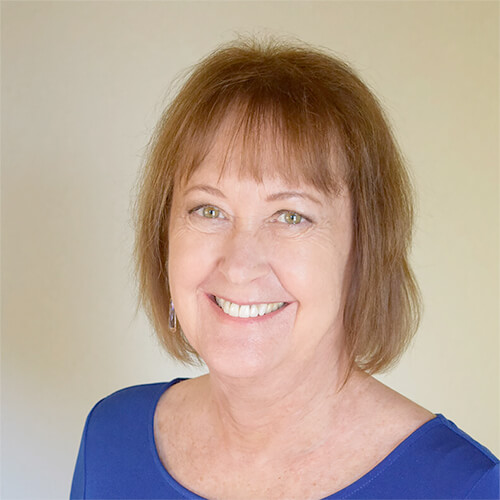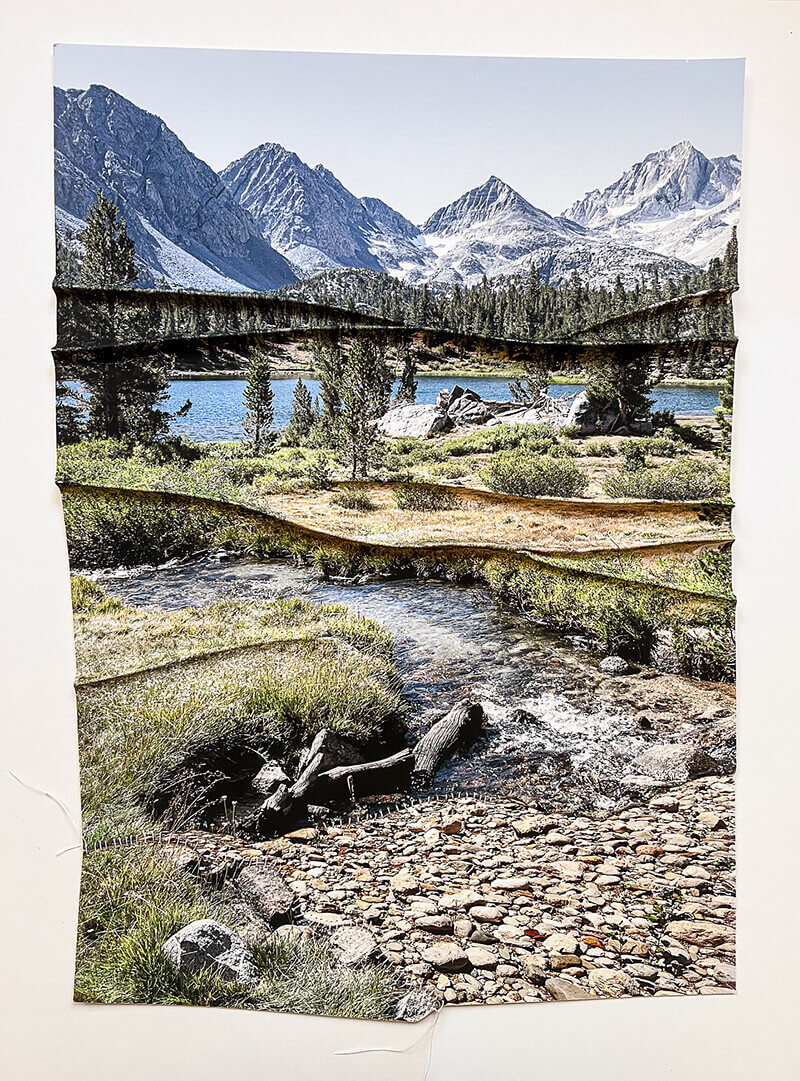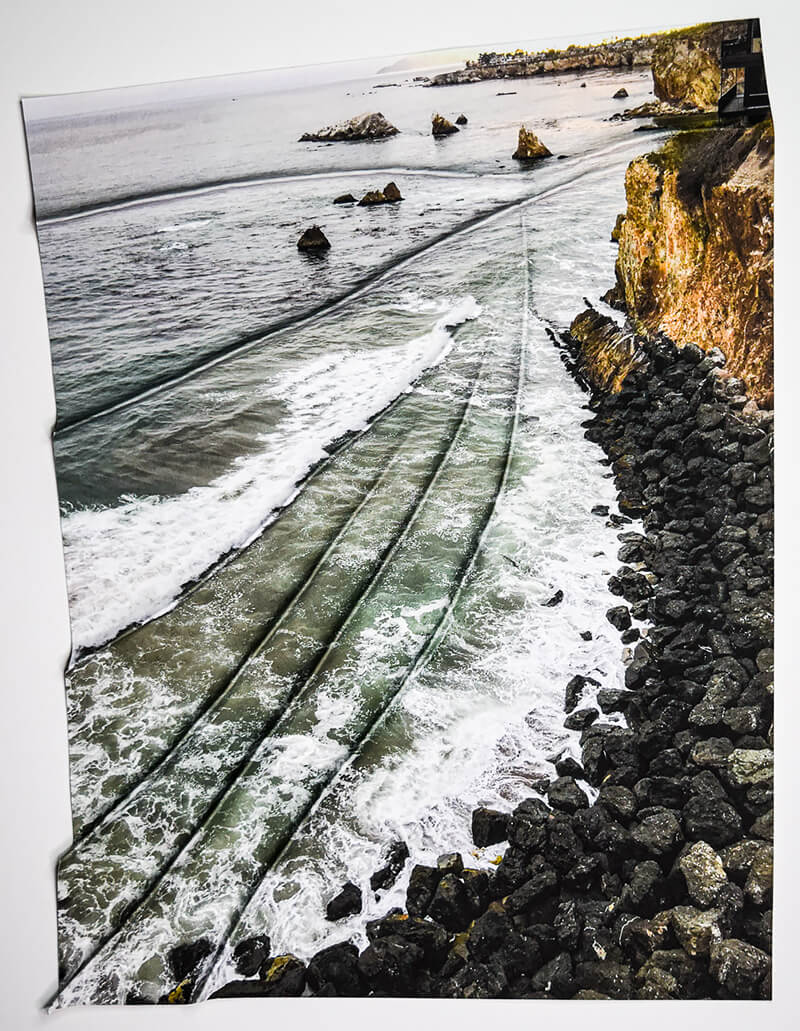Monterey-based photographer
Debra Achen was born and raised near Pittsburgh, PA, where she developed a passion for both nature and art. She studied a variety of studio arts, including drawing, painting, and printmaking in addition to her training in traditional film and darkroom photography. Her project 'Folding and Mending' won the September 2022 Solo Exhibition. We asked here a few questions about her life and work.
All About Photo: Where did you study photography?
Debra Achen: My original career plan was to get a degree in Art Education and teach at the high school level while working on my Master's Degree. I studied the gamut of studio arts from drawing, painting, and printmaking, to sculpture, ceramic sand even fabric design. However, when it came to student teaching in the classroom, I quickly discovered that profession was not for me. I switched gears, ultimately completing my BA in Visual Arts at the University of California, San Diego where my coursework consisted of filmmaking, video production, and photography with training in traditional darkroom processes. After college I embarked on a career in film and television production and later in educational technology. All the while I enjoyed taking travel and nature photos as a creative outlet.Then the gift of a digital camera rekindled my love of photography as a fine art medium.This coincided with my move to the Monterey Peninsula, an incredibly scenic area steeped in the history of photography. There are many individuals and organizations here that continue to honor the traditions and mastery of craft that fostered the school of West Coast fine art photography. I immersed myself in this environment and continue to attend workshops and lectures to engage with new technical and creative innovations in the field.
Do you have a mentor?
Quality feedback is important to my growth as a photographic artist, especially when developing a new project. I am lucky and grateful to have a number of established photography professionals I can call upon for advice in all aspects of my practice. In addition, I belong to several critique groups that provide honest, constructive criticism. I also take part in portfolio reviews a few times each year. It is very insightful to see my work from the ''outside looking in.''
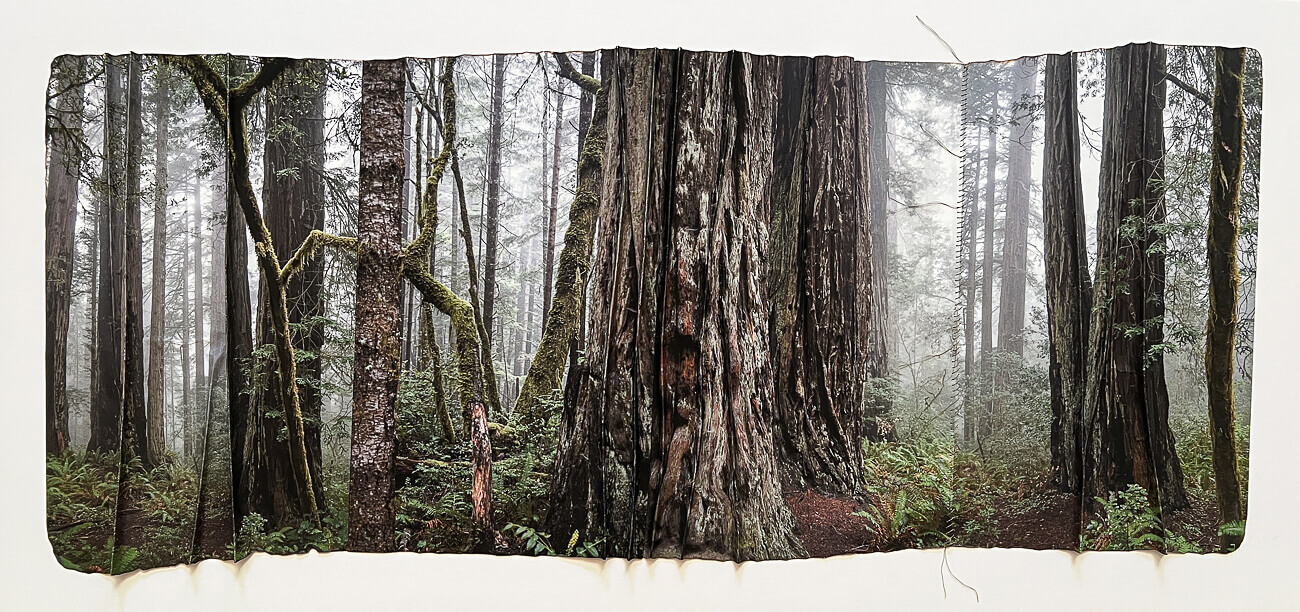
Is More Than © Debra Achen
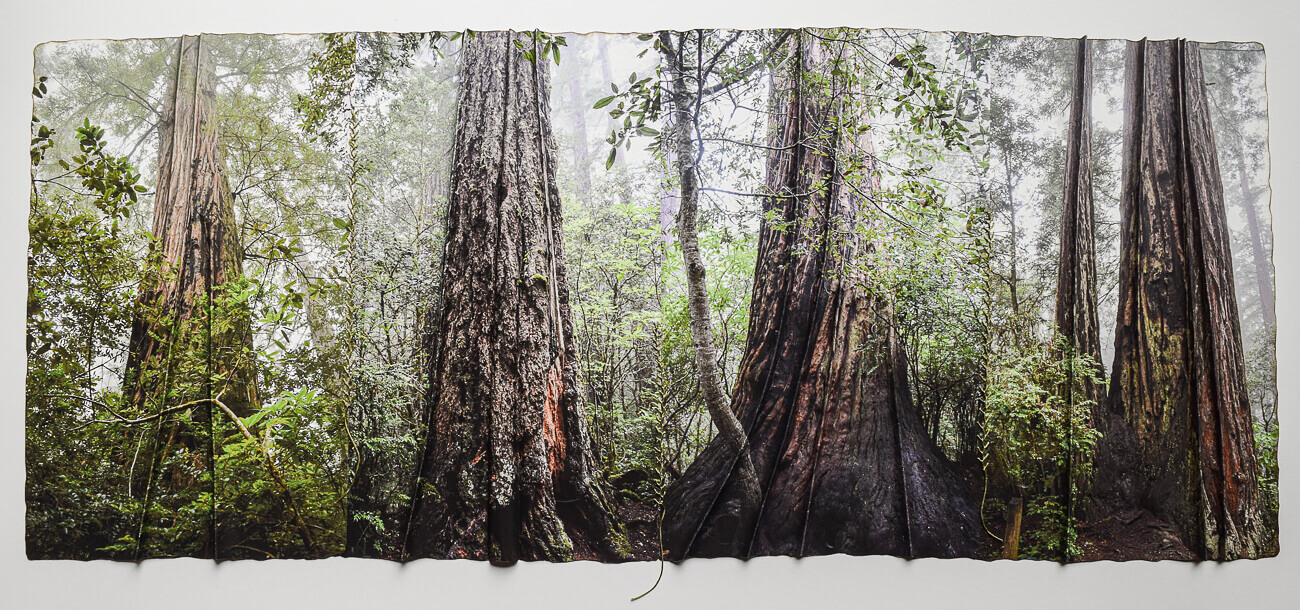
Nexus of the Elders © Debra Achen
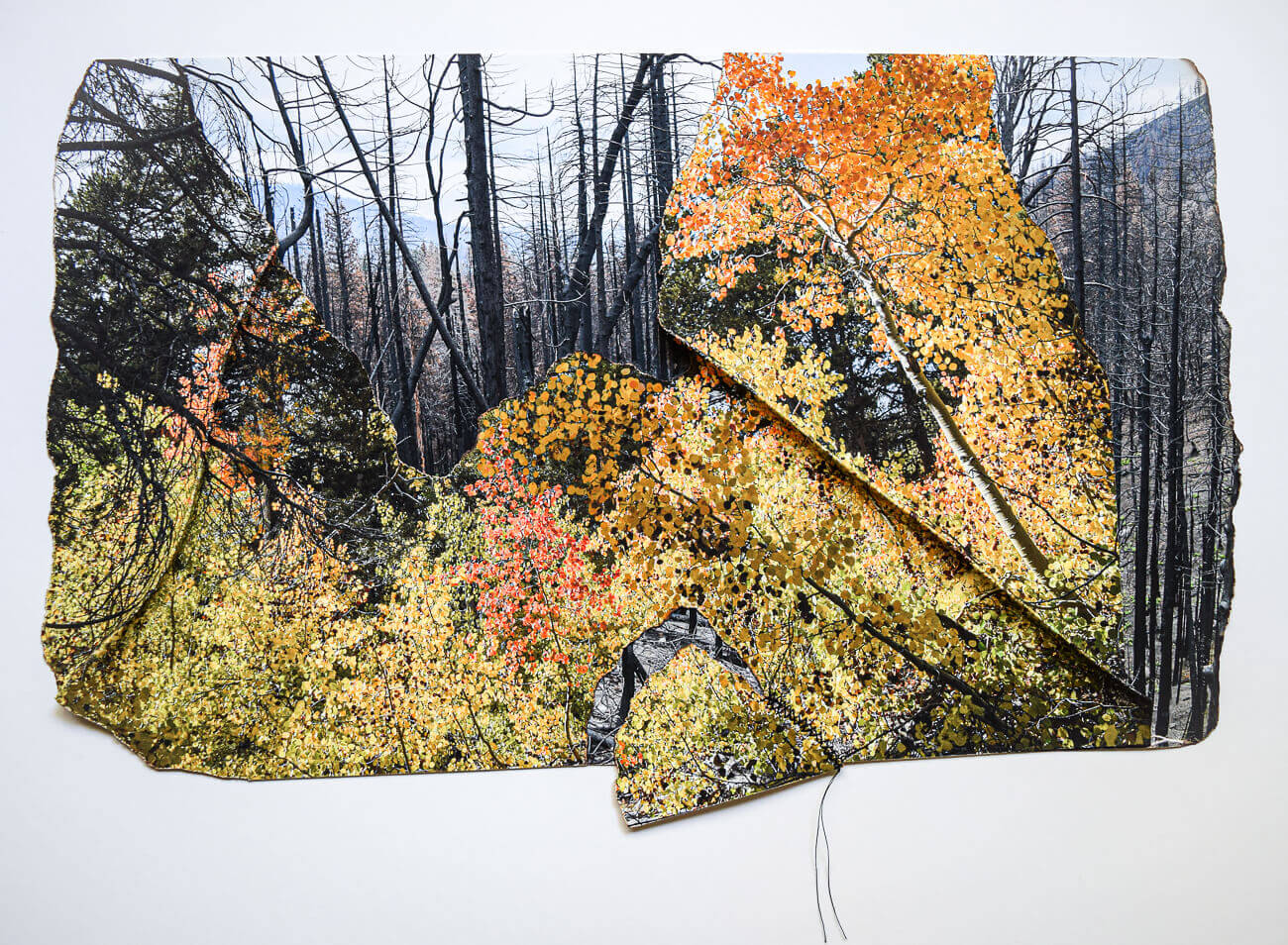
Autumn Burn Scar #1 © Debra Achen
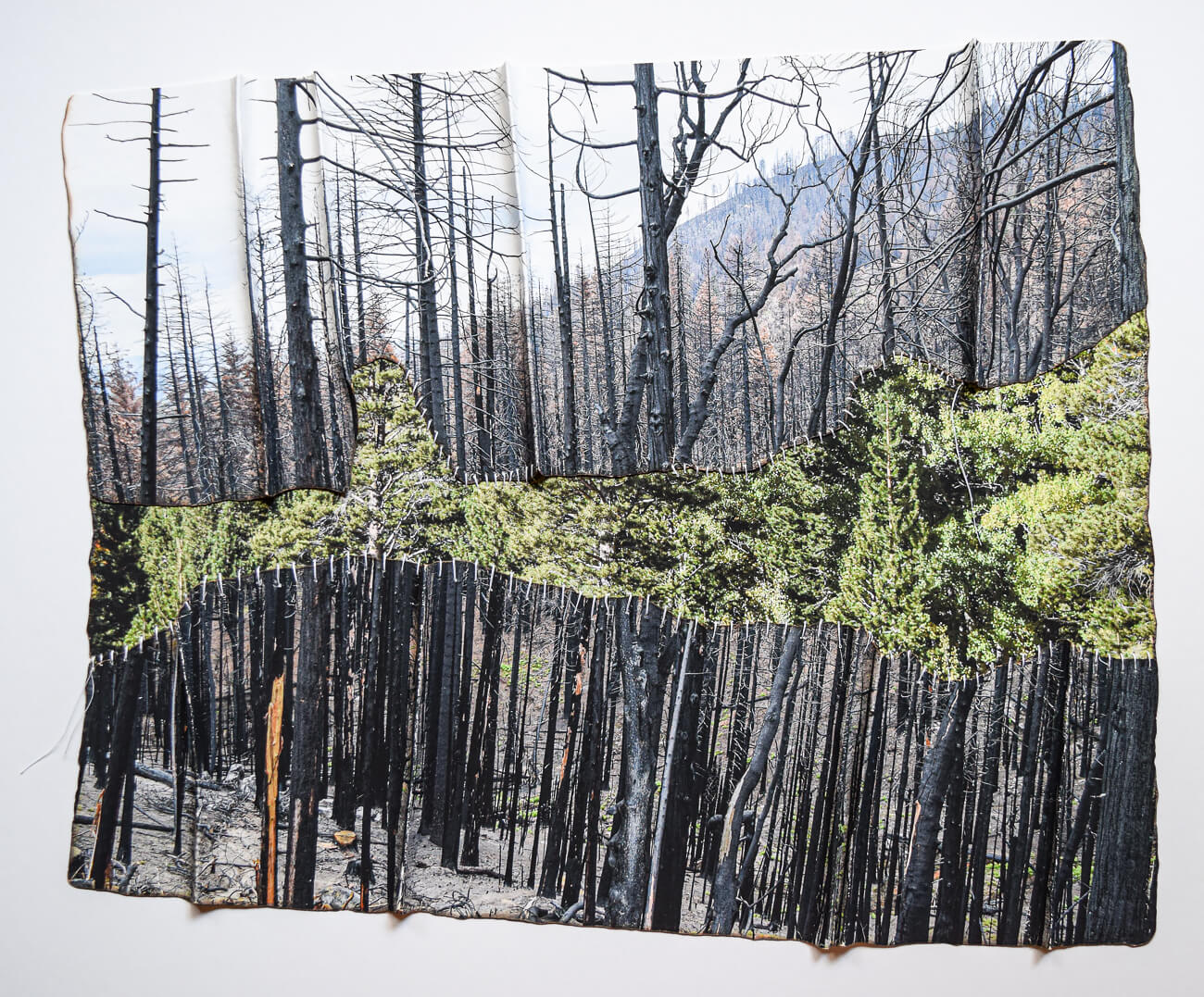
Sierra Burn Scar #2 © Debra Achen
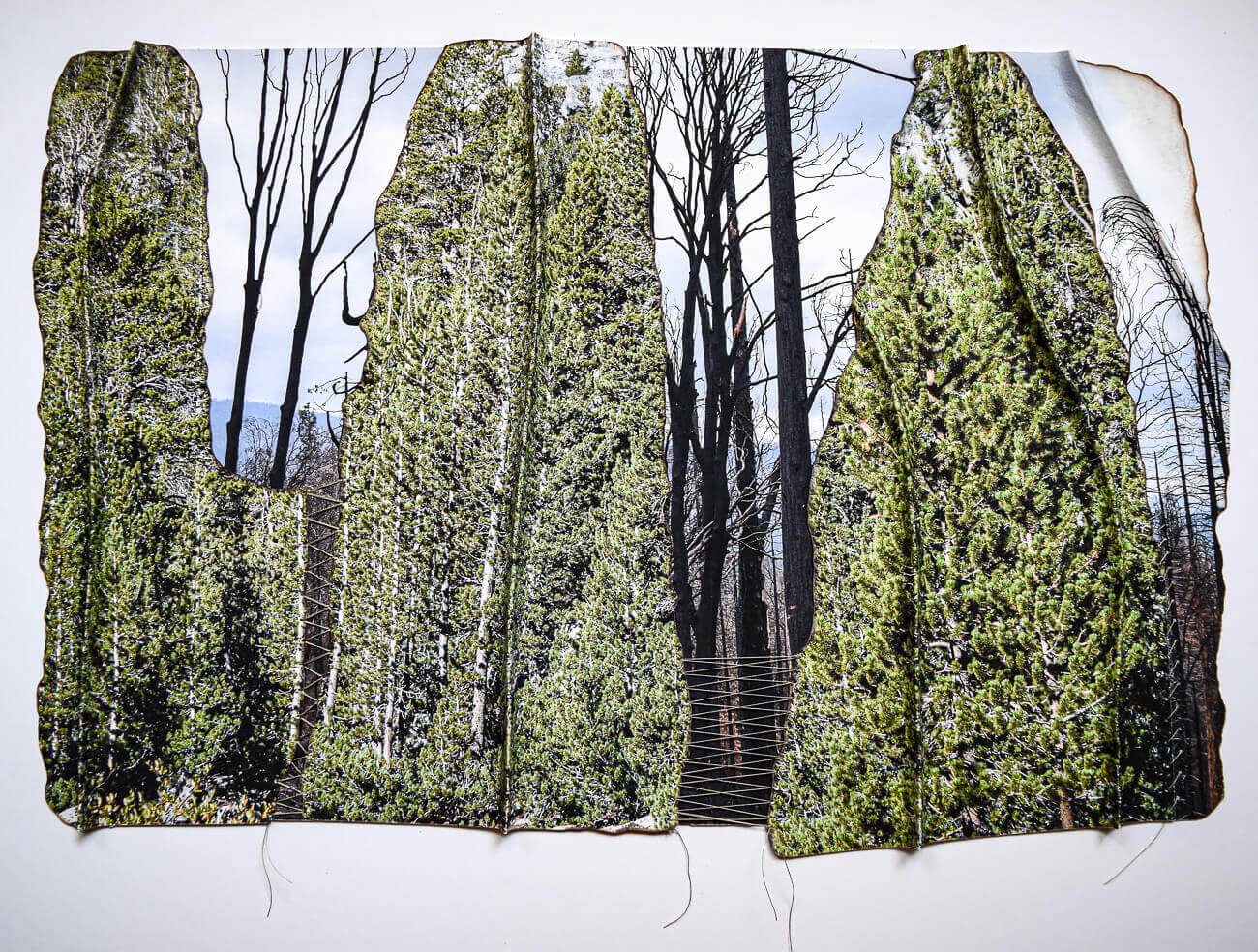
Sierra Burn Scar #3 © Debra Achen
I think of my creative process as continually evolving. As I become aware of thoughts, feelings, and ideas I want to express, I look for the best processes to bring them to fruition. As a photographer, I have always been most passionate about landscape and nature as subject matter. Over the past decade, I have witnessed first-hand the increasing impacts of climate change right in my own backyard: years of severe drought followed by horrific wildfires and a winter of record-breaking storms. While lucky to have personally escaped any major damage, it is hard for me NOT to be affected by these extreme weather events and their impact on my environment and community. I admit to a growing case of climate anxiety. I had been looking for a way to convey these feelings and experience sin my photography when I enrolled in a class through Santa Fe
Workshops called ''Altered Landscapes.'' We explored different techniques for transforming images in camera, through digital processing, and with manual manipulation of photographs. When it came to the lessons on crumbling, folding, and stitching prints, there was an ''Ah Ha'' moment! It was the perfect fusion of concept and process: the world folding in on itself through the impacts of climate change.
How long did you prepare for this project?
There was a several-month exploration period when I experimented with different papers and techniques. With the digital prints, I needed to find an archival paper that would stand up to the folding process without the ink cracking. I also wanted it to be as sustainable as possible. I was happy to find that Hahnemühle's Agave paper fit the bill. One of the big take-aways from the workshop was to create prototype prints using inexpensive, recycled 8½ X 11''copy paper on my officejet printer. I make up to three or four prototypes for each piece to determine where I want to put the folds, how I want the collaged images to overlap and how the torn edges will be scorched. I also work out the placement and style of stitching and the color of thread... all before I make the archival print.
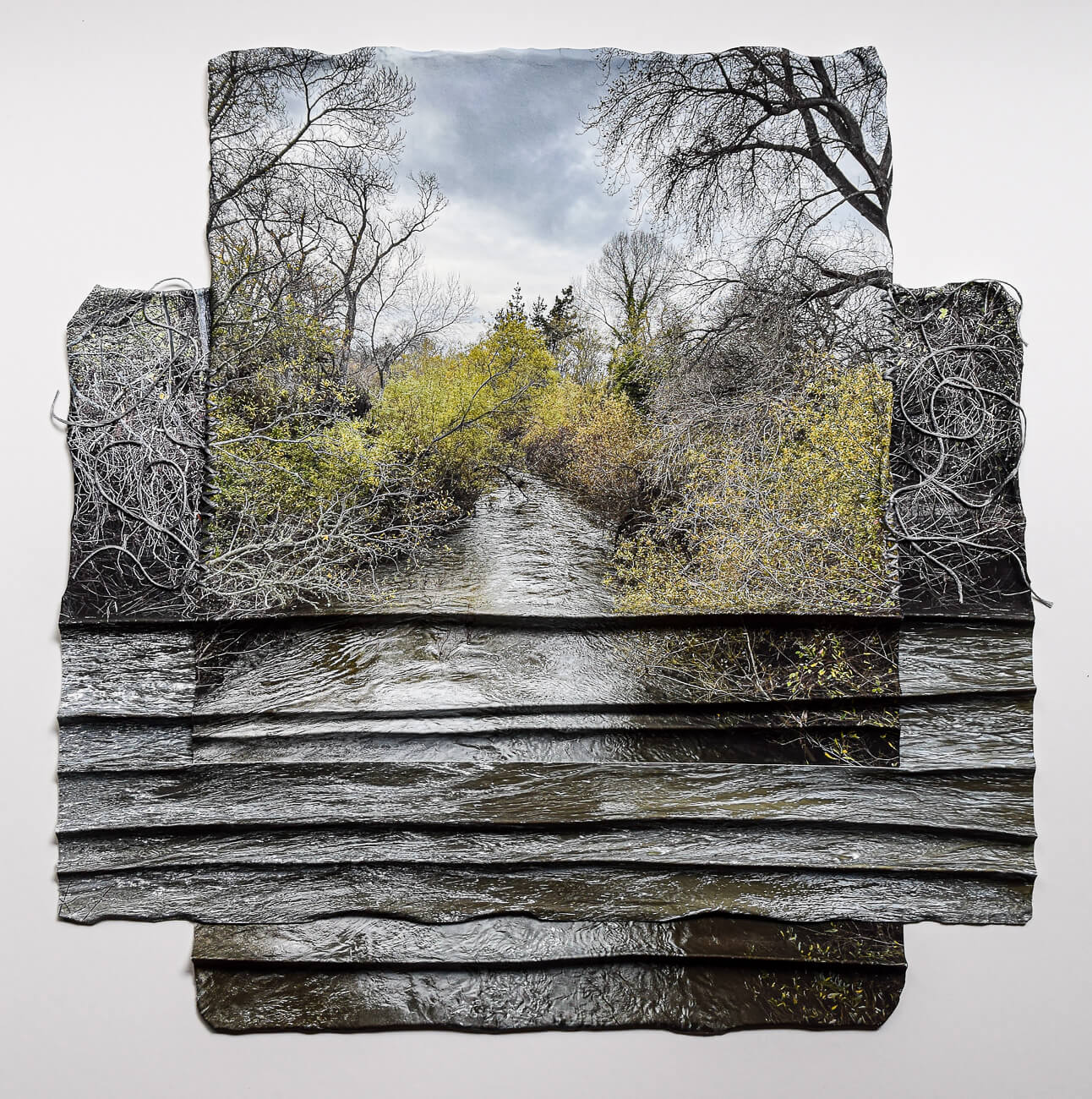
Rivers in the Sky © Debra Achen
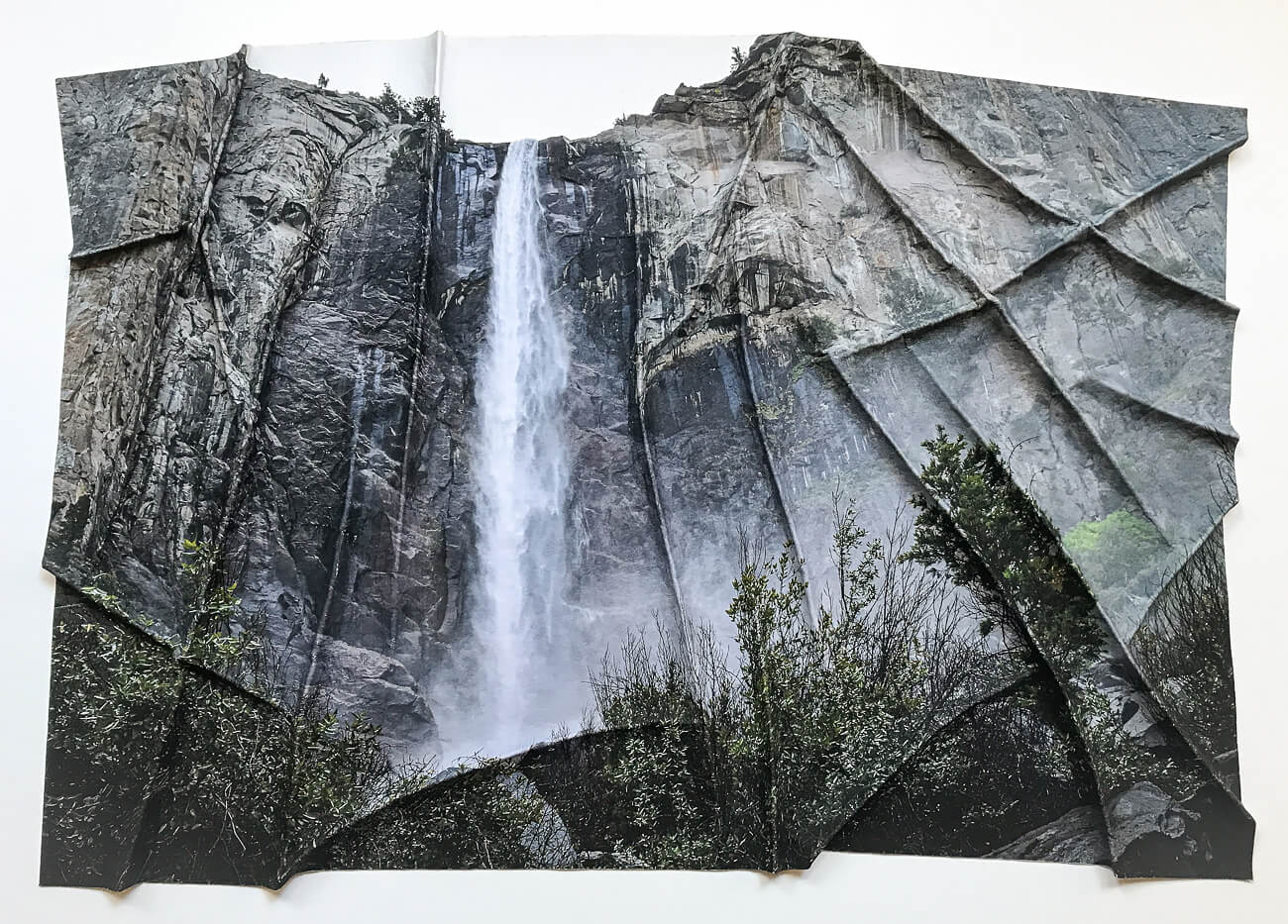
Falls to Pieces #2. © Debra Achen
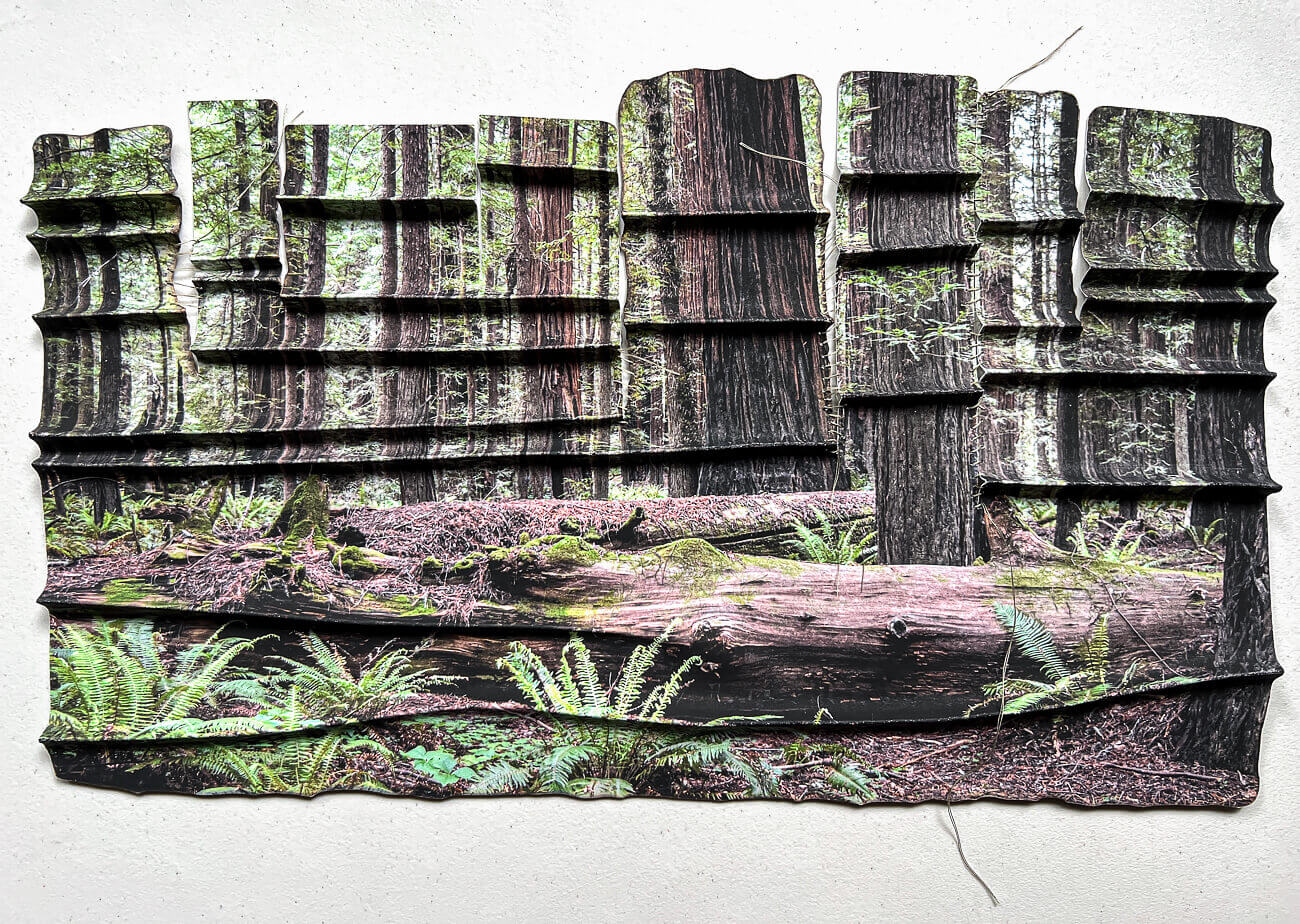
Forest Deconstruction© Debra Achen
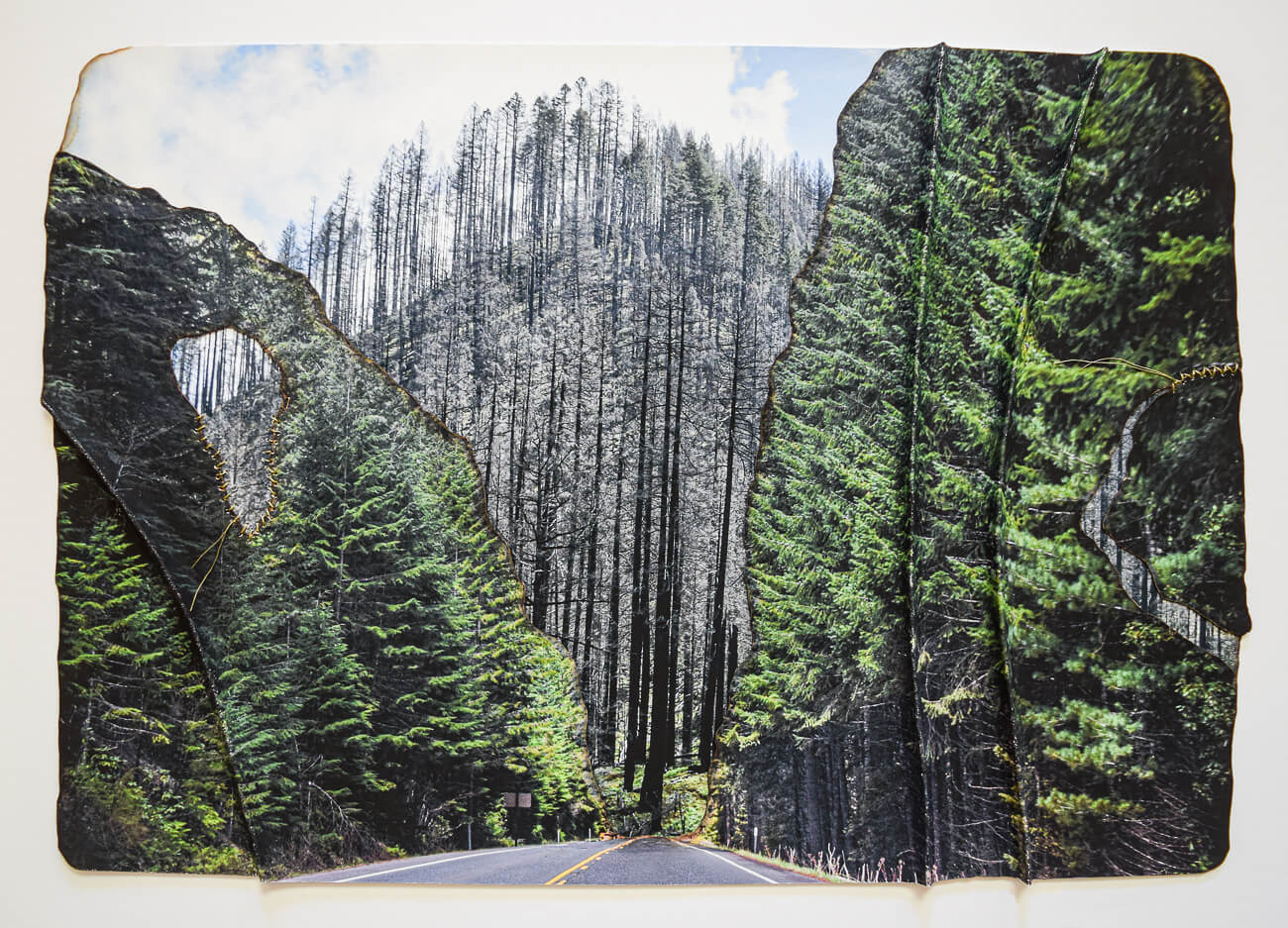
Down the Road © Debra Achen
I am producing these pieces in small limited editions. Since they are all hand-manipulated, each edition is a unique variation. Once I'm happy with the prototype,the time to make each print varies depending on complexity. A simple piece, say a single print with just folding,can be done in about 4hoursover 2 days, while a complex multi-print collage might require 12 hours or moreover 4-5 days. The agave paper is very thick and fibrous which helps in forming the folds. But that means it needs to be perforated in order to control the areas I want to tear and I need to poke holes where I want to pull the needle and thread through for the stitching. All the more reason for having a prototype as a guide. As I'm describing it, the process may sound cumbersome, but it's actually fun and rewarding to see the final piece come together step by step.
Are there some compliments or honors that have touched you the most with this body of work?
I think that finding an audience and recognition for your work can be motivating for artists and at the same time, contributes to our collective culture. I am pleased to have opportunities for the ''Folding and Mending'' work and its message to reach a variety of audiences, including my
''All About Photo'' solo exhibition , an article on the amazing
Lenscratch platform, and a featured presentation in Dek Unu Magazine. I am honored to have the work selected for a number of significant juried exhibitions including the 2022
Photolucida Critical Mass Top 50 (which brought tears to my eyes when I received the
news). Probably what touches me most, though, is when a viewer responds to a particular piece and appreciates the meaning, when someone ''gets it.''
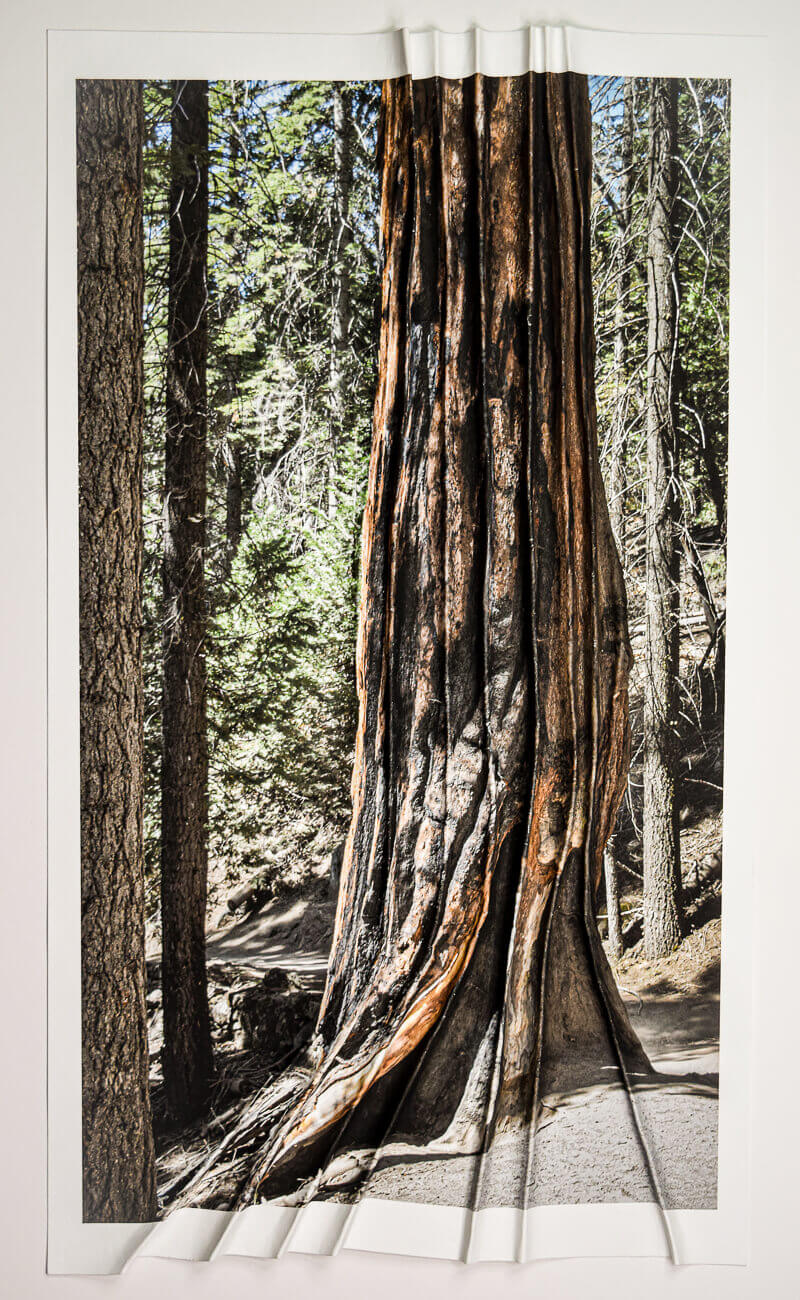
Corrugated Redwood © Debra Achen
I am conflicted about this question. On the one hand, it feels a little patronizing to be categorized this way. Is there an implication that I am achieving recognition because of my gender? But, from a historical perspective, it is important that women photographers are finally getting the recognition and representation they deserve. For art to be a true reflection of our culture, we need to include diverse perspectives from all gender identifications, ethnicities, and ages. We still have a long way to go in terms of equality in museum acquisitions and exhibition opportunities. So, if this label helps to open doors for more women photographers, then I will embrace it.
What are your upcoming projects?
I am still inspired with ideas for the ''Folding and Mending'' project. While continuing with pieces about the environmental impacts of climate change, I am also developing some new work that speaks to solutions we can apply in our everyday lives –addressing the ''Mending''aspect.My first series, ''The Cost of Soft,'' is in response to what the Natural Resources Defense Council calls ''the issue with tissue.'' In a nutshell, the softer, more absorbent brands of toilet paper, facial tissue, and paper towels are produced with a higher percent of virgin pulp sourced from trees in old-growth, ''primary'' forests that have never been logged before. These older trees are a major source of carbon capture, absorbing as much as three times more carbon from the atmosphere than the new trees logging companies may (or may not) be planting. They also support hundreds of other tree, plant, and animal species ina healthy, biodiverse forest ecosystem. The major tissue manufacturers should be using more recycled paper and alternative fibers like bamboo. A few are starting to come around and new, more sustainable offerings for these single-use, disposable productsare coming to market. We can support these changes –our choices as consumers make a difference!
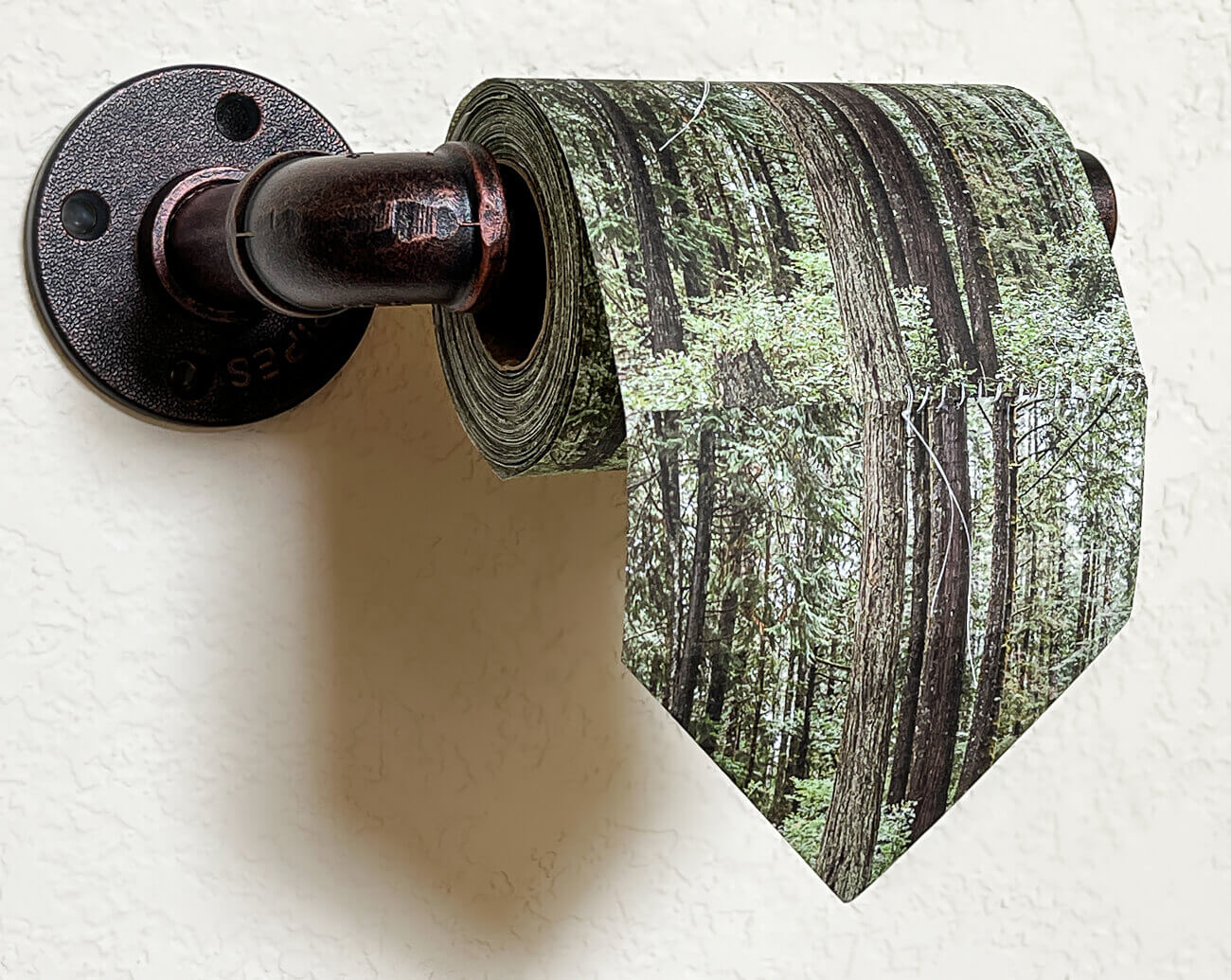
Cost of Soft, 240 Count © Debra Achen
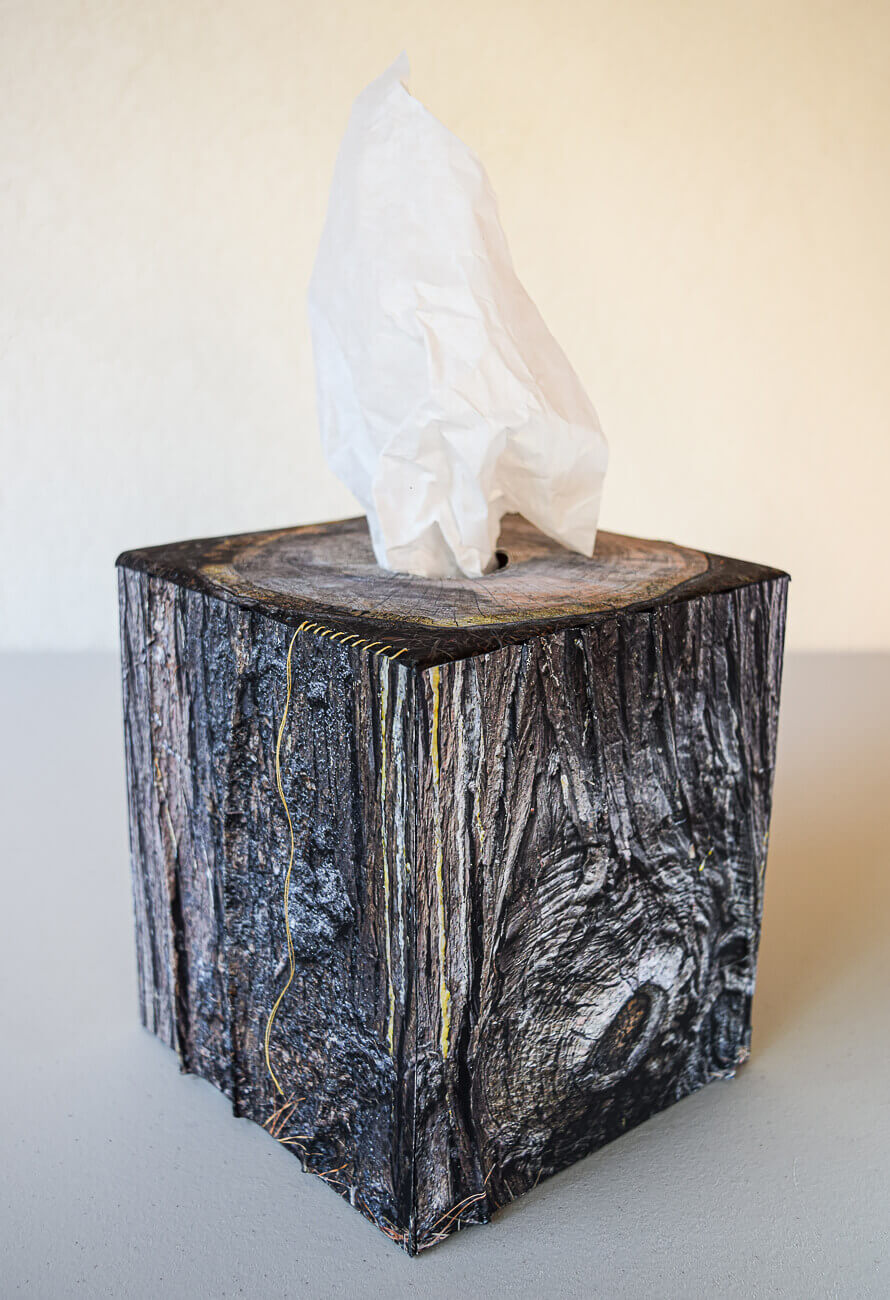
Cost of Soft, 60 Count © Debra Achen
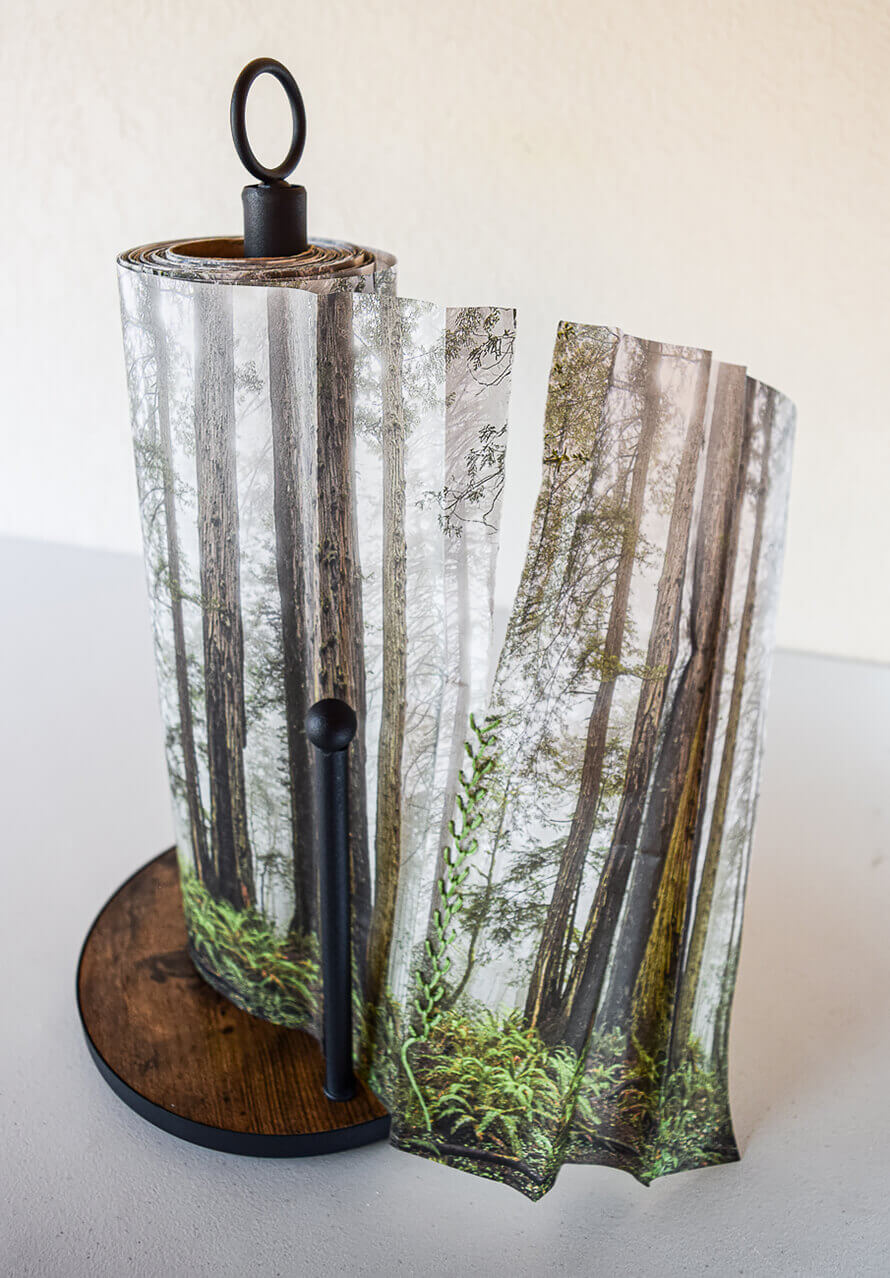
Cost of Soft, 90 Count © Debra Achen
